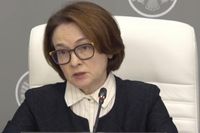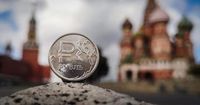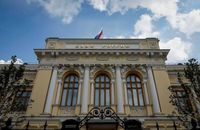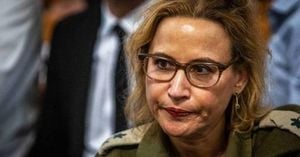On Friday, September 12, 2025, Russia’s central bank moved to cut its key interest rate from 18% to 17%, a decision that reverberated through Moscow’s financial sector and sent ripples across global markets. While the reduction was broadly anticipated, its implications have left economists, investors, and ordinary Russians alike pondering the future trajectory of the country’s embattled economy.
This rate cut, announced by Central Bank Governor Elvira Nabiullina, comes on the heels of a rapid cooling in Russia’s economic growth. After two years of robust expansion fueled by a wartime spending spree, the country now faces a sharp slowdown. As Nabiullina put it during her press conference, “We do have a cooling off, that is, a slowdown in economic growth. This is natural after overheating.” Her words echoed a growing consensus among analysts: the Russian economy is shifting from a period of overdrive to one marked by uncertainty and potential stagnation.
The central bank’s decision was less aggressive than many analysts had hoped. According to Reuters, experts had predicted a 200 basis point cut, but the bank opted for a more cautious 100 basis points, citing persistent inflationary pressures. “Inflation expectations have not changed considerably in recent months. In general, they remain elevated. This may impede a sustainable slowdown in inflation,” the bank said in its official statement. The annual inflation rate slowed slightly to 8.14% in August from 8.79% in July, but it remains more than twice the government’s official target of 4%.
Much of this inflation has been driven by soaring military expenditures. Since the launch of the Ukraine offensive, government spending has jumped by more than two-thirds, with military outlays accounting for almost 9% of GDP, according to President Vladimir Putin. This surge in spending helped Moscow defy early predictions that Western sanctions would trigger an economic collapse. Yet, it has also fueled price increases across the board, with higher petrol costs—driven in part by Ukrainian attacks on Russian refineries—standing out as a major concern.
The rate cut is intended to stimulate economic activity, particularly in interest rate-sensitive sectors such as banking and real estate. As reported by TipRanks, the move is expected to boost sentiment in these industries, though the market impact may prove short-lived as investors adjust to the new policy stance. The longer-term implications for growth remain uncertain, especially as the central bank now expects the economy to expand by just 1% in 2025, down sharply from the 4.3% growth recorded in 2024.
Some business leaders and economists have sounded the alarm about the risk of stagnation or even recession. German Gref, CEO of Sberbank—Russia’s largest bank and a rare public figure willing to challenge the official line—recently described the economy as being in a state of “technical stagnation.” Central bank data supports this assessment: while the economy grew by 1.1% year-on-year in the second quarter, it actually shrank by 0.6% compared to the previous quarter. A graph published by the bank showed GDP contracting in both the first and second quarters of 2025, which aligns with the technical definition of a recession.
Governor Nabiullina, however, rejected the notion that Russia is in recession. She urged economists to consider other indicators such as employment, real income, consumer demand, and industrial production. “We do indeed have a cooling of the economy. This is natural when coming out of overheating, when production capacity must catch up with demand,” she said, adding that the latest seasonally-adjusted data pointed to some growth in the second quarter.
Monetary policy is only part of the equation. Fiscal challenges loom large, with Russia’s budget deficit ballooning to around $50 billion—about 2% of GDP—in the first eight months of 2025. That’s triple the deficit seen at the same point in 2024. The central bank warned that fiscal normalization “has not yet materialized, taking into consideration the budget deficit accumulated since the beginning of this year.” The parameters of a new budget, due to be submitted to parliament later this month, could force the bank to adjust its monetary policy yet again.
Russia’s public finances are under strain from weak oil prices—a critical pillar of the national economy—and a weakening ruble. The currency fell to its lowest level against the US dollar since April, though it did rally by 0.8% to 83.85 against the dollar following the rate cut, partially reversing some of this week’s losses. The ruble’s earlier strength this year had helped the central bank fight inflation by making imported goods cheaper, but recent depreciation has complicated the picture.
To bridge the budget gap, Moscow has relied on its so-called rainy day fund, built up from oil and gas proceeds in the years before the Ukraine conflict. But even this cushion is wearing thin: the value of Russia’s liquid assets has halved from more than $100 billion before the war to $48 billion today. Meanwhile, Kyiv and its Western allies are working to choke off Russia’s energy export earnings, hoping to exacerbate Moscow’s fiscal woes. US President Donald Trump recently raised tariffs on India due to its purchases of Russian oil and has threatened similar measures against China, further squeezing Russia’s economic lifelines.
Inside Russia, the business community has been vocal in its frustration with the central bank’s high borrowing costs, arguing they are stifling investment and growth. Vulnerable sectors such as construction, coal, and metals have been especially hard hit, with lending rates reaching a prohibitive 25% or more after the bank hiked its key rate to 21% last October—the highest in over two decades.
Still, the central bank remains cautious. It has emphasized the importance of prudent fiscal policy in keeping inflation in check, and indicated that it may have to reverse course and raise rates again if the budget expands further. “If the budget expands further, the bank will be forced to push interest rates up once again,” Nabiullina warned.
As Russia’s parliament prepares to debate the new budget, all eyes are on whether the government will make the necessary fiscal adjustments to prevent further inflationary pressure. The central bank has stated it will update its assessment of fiscal policy effects on inflation once the amendments are finally submitted to the Duma.
For now, Russia stands at an economic crossroads. The combination of war-driven spending, inflation, a weakening currency, and growing international isolation has left policymakers with few easy options. Whether the latest rate cut will provide the needed spark for growth—or simply postpone a more painful reckoning—remains to be seen.






